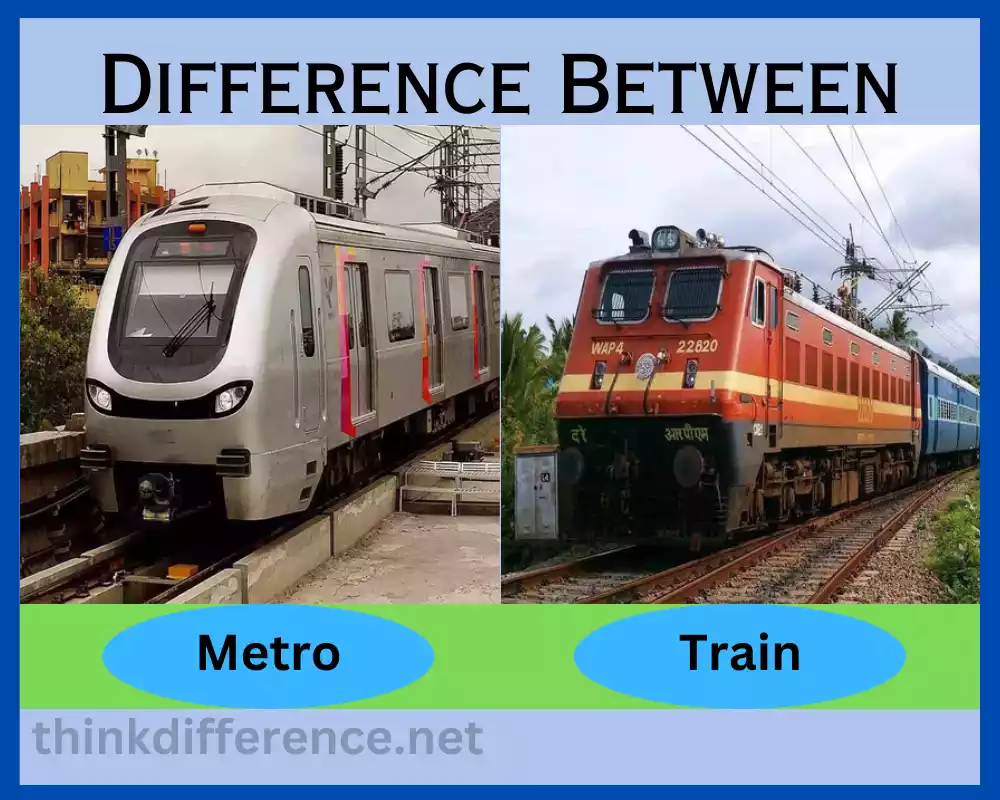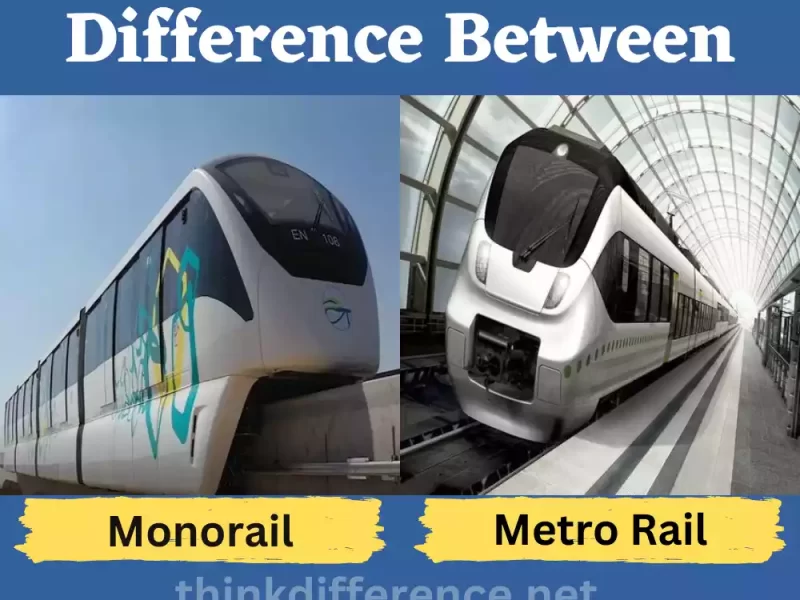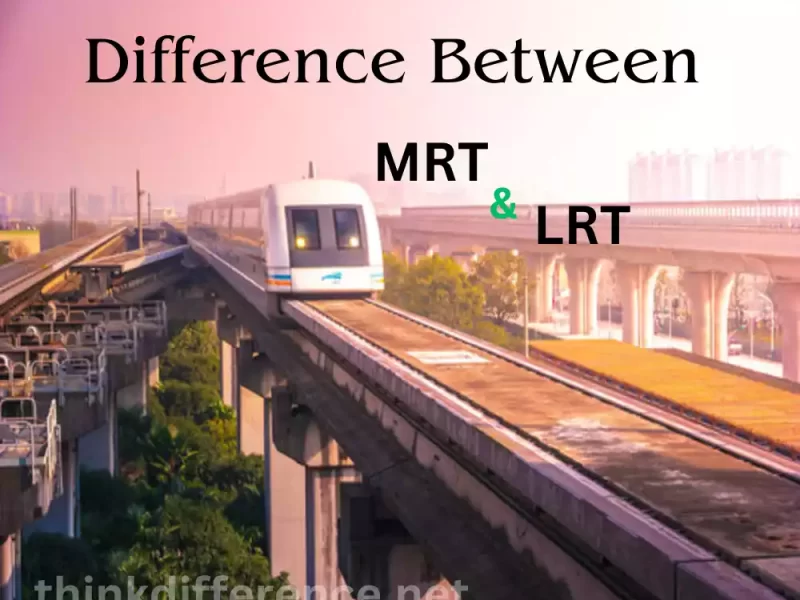Introduction of Metro and Train
Public transportation systems play a vital role in urban and regional areas, providing efficient movement of people between areas. Train and metro systems are two common forms of public transit that facilitate passengers traveling between points. Both systems offer passenger travel. They differ significantly when it comes to design, infrastructure and operation – it’s crucial that travelers understand these differences so they can navigate each mode effectively.
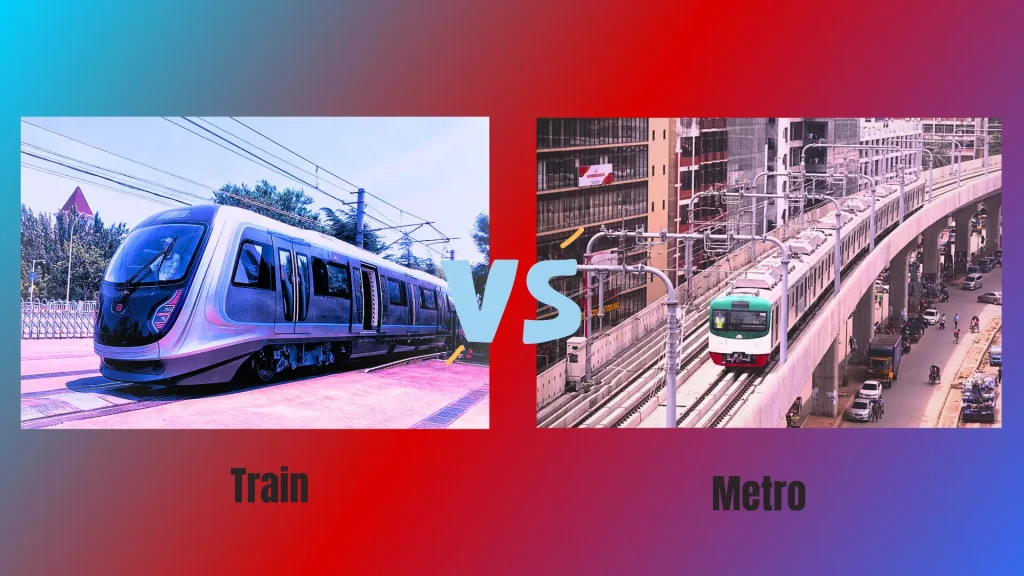
This content outline will explore the characteristics and definitions of Metro and Train systems, their designs, operating systems, technology infrastructure. We will investigate their use as urban and regional transport as well as passenger capacity speed frequency coverage of each mode of transport to provide a deeper insight into its unique benefits and features.
History of Metro and Train
History of Metro:
Urban rail systems have been around since 1863 when London Underground (also known as The Tube) first began operating with steam-powered trains before transitioning to electric traction a century later. Following its success, other metro systems across the world followed in its footsteps, inspiring innovative city planners everywhere to design similar systems of their own.
Paris became home of Europe’s inaugural metro system in 1900 – boasting an underground system equipped with electrified trains for efficient urban transit – when they launched their Paris Metro system. Since then, its success has lead to many more metro systems being established throughout Europe and worldwide.
At the turn of the 20th century, metro systems rapidly spread throughout several major cities such as New York City and Berlin. Spreading across Tokyo, Buenos Aires and Moscow. Metro systems were essential forms of urban transport as they offered efficient mobility to an ever-increasing population.
Metro systems have greatly evolved over time. Many cities have constructed expansive networks serving millions of passengers every day; technological innovations have led to enhanced train control systems and modern station designs.
History of Trains:
Steam locomotives were invented during the early nineteenth century. Stockton and Darlington Railway was the first commercially successful steam locomotive when it started operating in northeast England starting operations in 1825 and carrying both passengers and goods.
Steam locomotives transformed transport by providing faster and more cost-efficient travel over longer distances. Railroads quickly spread throughout Europe, North America and around the globe as industrialization and economic development proliferated rapidly. They eventually served as the backbone for such development.
Mid-19th-century railway technology experienced significant advances. Railway networks expanded significantly as iron-and-steel rails, more powerful locomotives, and standardizing track gauges were adopted into service.
In 1869, the transcontinental railroad in the US was completed, connecting East to West coast cities efficiently while providing efficient movement of people and goods across its vast terrain. Similar railway networks have since been constructed throughout Europe, Asia and other continents to connect cities for trade or travel purposes.
Electric and diesel locomotives were replaced by more energy-efficient and faster locomotives in the 20th century, producing reduced emissions while offering faster travel between major cities. High-speed rail networks allowed even quicker travel between major metropolitan centers.
Trains remain an indispensable mode of passenger and freight transportation, providing reliable, sustainable, economical travel. Their use connects regions while driving economic development forward; furthermore, high-speed rails, maglev trains and other technological advancements continue to revolutionise train transportation by making it faster, greener and more cost effective than ever.
What is a Metro?
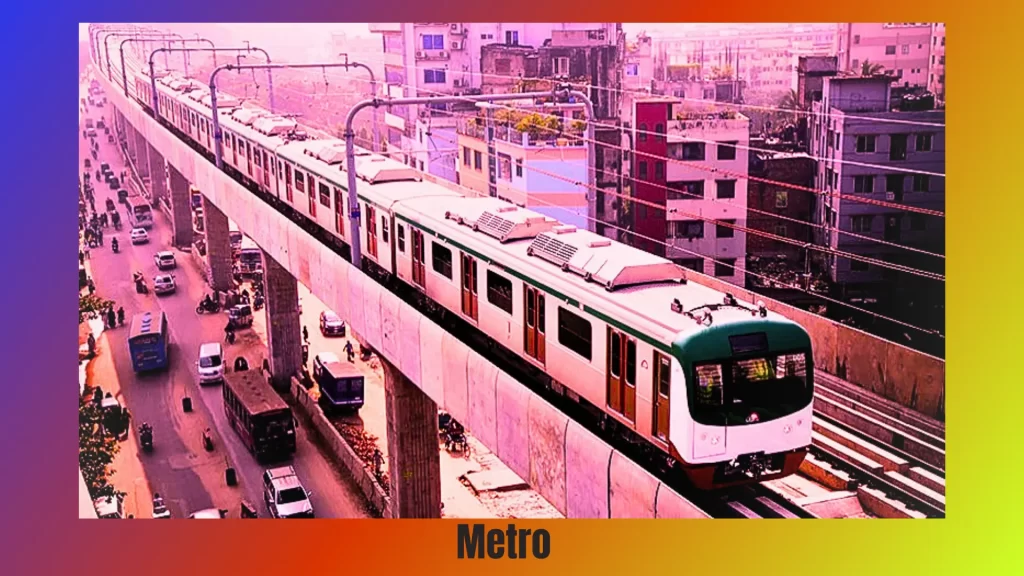
Metros (subways, undergrounds or rapid transit systems) are urban passenger transport systems operating along dedicated tracks within metropolitan areas or cities. Metros were originally created to quickly move large volumes of passengers in dense urban settings more efficiently.
Here are some key characteristics of metro systems:
- Infrastructure of Metro Systems: Many metro tracks run underground Other sections may be elevated or on the surface. Infrastructure includes tunnels, viaducts, bridges, stations and maintenance facilities that all help create this dynamic network of underground and surface tracks.
- Electric Traction: Metros typically run on electric traction; either via overhead wires or the third rail system. Electric traction provides for smoother acceleration and better control compared to other modes.
- High Capacity: Metro systems are specifically tailored for high passenger volumes. Their trains feature interconnected cars that offer ample standing and seating space; metro stations also include multiple platforms in order to accommodate peak times with multiple passengers arriving simultaneously.
- Fixed Routes and Schedules: Metro systems operate along predetermined routes and schedules, with stations predetermined and trains operating according to an established timetable to guarantee predictable arrival and departure times allowing commuters to plan their trips reliably with predictable service levels.
- Rapid Transit: Metros are known for their swift service. Trains run at high speeds between stations to reduce travel times. Rapid transit offers an efficient means of moving around a city quickly during rush hour – something metros do exceptionally well!
- Fare Systems: Metro systems employ several fare collection mechanisms to collect fares from users, such as paper tickets, smartcards and mobile payment solutions. Users usually purchase these tickets or cards to gain entry to the network; their fare will usually depend on distance covered or zones crossed.
- Safety and Security: Metro systems place great importance on passenger safety. In order to safeguard passengers, stations and trains are equipped with surveillance cameras, emergency communications systems and other safety features. Metro staff such as security personnel or train drivers provide services as needed and assist passengers as required.
- Integration with Urban Environment: Metro stations are strategically positioned throughout urban areas near residences, commercial establishments and cultural venues to enable passengers to easily access them from any starting point and reach their destinations, thus decreasing travel time and needing other forms of transport to get them there.
Metros provide reliable and cost-effective urban transport that reduces congestion while saving commuters’ time. Metros contribute greatly to urban growth by improving mobility, accessibility and connectivity within cities; contributing significantly towards livability as a result of their presence.
What is a Train?
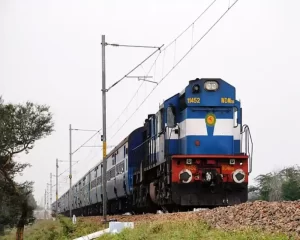
Trains are collections of connected vehicles (cars or carriages) traveling along rails or tracks and used primarily to transport people and goods over long distances, often following predefined routes and schedules across countries or even international boundaries.
Here are some key features and components of train systems:
- Locomotives: Trains are propelled by locomotives – specially-built engines which provide necessary traction. Locomotives may use diesel, steam or electricity power depending on the nature and infrastructure of each train they propel.
- Train Cars/Carriages: Train cars/carriages form the basic foundation of any train journey, providing seating for passengers or sleeping/eating areas as well as cargo storage capacity. Multiple train cars connect together into an entire train.
- Tracks and Infrastructure: Trains run along railways or tracks made out of specially laid out steel rails that may either run underground or elevated depending on what kind of train system and route is in operation. Infrastructure along the train route could include tunnels, bridges, stations or platforms along its path.
- Train stations: Stations on train routes provide passengers with convenient points to board or disembark the trains, complete with platforms to board trains as well as ticketing systems and amenities like shops, restaurants and restrooms.
- Freight and Passenger Trains: Trains can be divided into passenger and freight categories. Freight trains transport goods like raw materials or manufactured products over long distances while passenger trains transport passengers ranging from commuter trains in small towns to high-speed rail services that span an entire nation.
- Timetables and Schedules: Trains operate according to pre-established timetables and timetables that outline when trains will leave and arrive at various stations, providing passengers with predictable journey planning capabilities as well as predictability and reliability for predictable travel experiences. Published schedules provide passengers with accurate time estimates so that journey planning can occur smoothly while guaranteeing predictability and reliability in travel arrangements.
- Signal and Control Systems: Trains employ signaling and controls systems to manage movement, maintain safety and ensure operational efficiency. These systems consist of switches, signals and communication devices which aid coordination to avoid collisions between trains.
- Trains as International and Cross-Border Travel Modes: Trains have long been used as an essential means of international and cross-border travel, connecting major cities across national borders with trains services that run according to international agreements; some may require customs clearance procedures when crossing borders as part of this journey.
Trains offer many advantages for transporting large numbers of people or goods long distances safely and reliably, in an eco-friendly fashion. Trains offer accessibility between and within regions by creating economic growth, tourism and mobility across commuting rail networks as well as high speed networks.
Differences Between Metro and Train
There are several key distinctions between metros and trains, here are the most notable:
1. Purpose and Function:
- Metro: Metros were developed specifically to serve urban transportation needs within cities and metropolitan areas, serving as rapid transit systems that efficiently move large numbers of people within its limits.
- Train: Trains serve many different functions; from intercity travel to local travel and beyond, passengers and goods can be transported across long distances as they link different cities, towns and regions together.
2. Infrastructure and Tracks:
- Metro: Most metro systems feature dedicated tracks primarily underground. Some sections may be elevated or on the surface level for ease of navigation. Additional infrastructure for metro systems typically includes tunnels and stations.
- Train: Trains operate on an intricate network of tracks that can be arranged in various ways to fit different terrain. Tracks may be located either on or under the surface depending on which train route and terrain will be traversed by it.
3. Route and Distance:
- Metro: Metropolitan area and city metro systems consist of fixed routes that criss-cross a metropolitan area or city, typically featuring multiple stops along their course and are intended for short to medium distance travel within their borders.
- Train: Trains offer long distance travel connectivity among cities, regions and even nations. Their multiple stops along predetermined routes make them perfect for both intercity travel as well as urban transit needs.
4. Speed and Frequency:
- Metro: Metros were developed specifically for rapid transit use and operate at significantly faster speeds than traditional trains. Metros are widely known for providing frequent service with short intervals between trains and fast transportation throughout a city.
- Train: Depending on its type and route, train speeds can vary significantly. While certain trains provide fast travel between major cities, commuter rail lines typically travel at slower speeds with frequent stops.
5. Passenger Capacity:
- Metro: Metro systems were specifically created to handle large passenger volumes during rush hours and at night, often employing trains with several carriages and large platforms at stations in order to handle such passenger volumes.
- Train: Trains vary considerably in both size and passenger capacity depending on their purpose and type. Intercity or high-speed trains tend to feature fewer carriages to increase passenger comfort while freight trains focus more heavily on cargo transportation.
6. Integration with Other Modes of Transportation:
- Metros: Metros can often be integrated with other forms of public transit systems like buses and trams to create seamless transfers between modes of travel.
- Train: Trains have the capability of integrating with various modes, yet their focus tends more toward connecting cities and regions than being used exclusively within an urban environment.
Regional differences exist and use of terms “metro” or “train” varies greatly; urban metro systems sometimes refer to themselves as trains as well. Specific characteristics can differ based on where these trains or metros exist in terms of location or terminology used.
Similarities Between Metro and Train
Metros and trains share many similarities; metros can offer the flexibility of fast travel while trains may provide shorter routes between major stops.
- Rail-Based Transportation: Both metros (metros) and trains use rail systems designed specifically for their efficient operation, with tracks and infrastructure specifically crafted to guarantee smooth journeys.
- Public Transport: Metros and trains offer public transit solutions that help people travel from one destination to the next without using private cars, thus helping reduce traffic congestion.
- Mass Transit: Both metros (metros) and trains can quickly transport large groups of people at once, thanks to their increased carrying capacities; their greater passenger carrying efficiency makes these transport methods ideal for rush hours when passenger volumes spike significantly.
- Fixed Routes and Schedules: Metros and trains both operate with fixed routes and schedules that give commuters an unshakeable sense of predictability and continuity. Both forms of public transportation operate on tracks connected by stations at which passengers may board or disembark – providing commuters with a sense of predictability in their daily routines.
- Tickets and Fare Systems: Metros and trains require passengers to purchase tickets or use fare cards in order to gain access to services, and use various fare systems in order to collect and administer fares effectively.
- Safety and Security: Metros and trains feature safety protocols designed to safeguard passengers. Stations and trains may include surveillance cameras or emergency communications systems to provide added peace of mind for everyone aboard their travels.
- Connectivity and Integration: Metros and trains play an essential part in providing better connectivity within cities and regions, making travel and transportation simpler by linking different areas such as residential areas, commercial centres, and transportation hubs.
- Environmental Benefits: Metros and trains have long been recognized for being more eco-friendly than driving individual automobiles, helping reduce traffic congestion, pollution as well as carbon emissions.
- Economic Benefits: Both metros and trains make significant economic impacts across their respective service regions, by stimulating business activity, encouraging tourism growth and streamlining goods transport between communities. They contribute immensely to regional economies by spurring local economic development with jobs creation, tourism promotion and goods-and-person transport services that enhance local economies’ performance.
Metros and trains both possess their own distinctive traits; yet all share common goals: efficient transport, connectivity and sustainable mobility.
Benefits of Using the Metro
Subways or metro systems offer many advantages to individuals and communities traveling. Here are just a few key benefits associated with riding them:
- Efficiency and Reliability: Metro systems provide efficient and dependable transport within urban environments. Operating independently of road traffic helps alleviate congestion and delays for passengers while frequent service ensures they can rely on reliable departure times for metro trains.
- Time and Cost Savings: Metro systems are widely renowned for their efficiency and speed, making travel faster than with cars or buses due to less congestion; also often cheaper than parking or driving your own vehicle.
- Access and Connectivity: Metro systems offer convenient access to various locations within cities. Their stations are strategically situated to serve residential neighborhoods, commercial districts, educational institutions and popular destinations – with metro networks covering large areas so passengers don’t need multiple forms of transport for travel.
- Environmental Sustainability: Public transportation systems such as metro systems can significantly decrease air pollution and carbon dioxide emissions by offering an alternative to private car ownership. They use electricity generated using renewable resources, making them an environmentally sustainable mode of travel that cities can leverage to lower their carbon footprint by supporting such public services as metro trains.
- Safety and Security: Metro systems place great emphasis on passenger safety and security. Stations and trains feature emergency systems and surveillance cameras, while controlled access to stations ensures greater protection of travelers. Staff presence further ensures greater protection.
- Capacity and Comfort: Metro trains have high capacity and comfort features that make them suitable for urban areas where space becomes limited. Metro trains feature spacious interiors to enable passengers to either sit or stand comfortably; many systems even provide special accommodations for people with disabilities. Metro trains also boast climate controls with noise reduction to enhance rider comfort levels further.
- Community Benefits: Metro systems make an invaluable contribution to urban environments. They aid its development while making them more livable; boost economic activity by making businesses, shopping centers and employment hubs more accessible; promote social inclusion by offering transportation alternatives for those without private vehicles; reduce traffic congestion by making accessing jobs simpler – contributing significantly towards improving road safety overall.
Metros provide multiple advantages, from cost and time savings, increased accessibility, environmental sustainability improvements and community building to safety measures and community development benefits. Metro systems promote efficient public transport that contributes to building more livable urban areas with sustainable environments.
Benefits of Using the Train
Trains offer many advantages to both individuals and communities alike. Here are just a few key benefits associated with taking train travel:
- Efficiency and Reliability: Trains have earned themselves a stellar reputation as efficient and dependable transportation systems across long distances, carrying both passengers and goods across varying terrains. Their systems operate according to fixed schedules that ensure timely arrivals and departures compared to other forms of transport which often suffer traffic jams; as a result, train arrivals tend to remain on-time and reliable.
- Time Savings: Trains offer significant time savings compared to other modes of transport for longer journeys, particularly cars or buses. Trains make fewer stops than these other forms of transport so passengers reach their destinations more quickly; moreover, some trains provide overnight or long distance services that enable travelers to cover significant distances without stopping along the way.
- Comfortable Travel: Train travel offers passengers many amenities for comfortable transport: comfortable seats with plenty of legroom and dining cars are among them, providing them with space to stretch out their legs while taking in scenery through large windows – more enjoyable and relaxing than traveling by car or busses!
- Environmental Sustainability: Trains are an ecologically sound form of transport. Electric or hybrid trains produce far fewer greenhouse gas emissions than cars or planes and they carry more passengers, which reduces each individual passenger’s carbon footprint.
- Reduce Traffic Congestion and Road wear: Individuals can reduce traffic congestion by opting for trains over cars; not only will passengers benefit, but so too do drivers and road infrastructure such as roads, tunnels and bridges, which means reduced wear-and-tear and potential cost savings on maintenance or repair bills.
- Safety: Travel by train is widely considered safe due to rigorous regulations, advanced signaling systems and professional operators. Trains operate on separate tracks from roads to reduce accident risks; emergency brakes and fire suppression systems in stations as well as passenger security measures onboard and at stations all contribute towards passenger protection.
- Community Connectivity: Trains provide vital links between communities and areas, supporting economic growth, tourism and social integration. Individuals without their own vehicles can use trains to get to work, school, healthcare services or cultural events without using other modes such as buses, taxis or bicycles – thus opening the way to economic expansion, tourism growth and integration. Train stations act as hubs connecting different modes such as buses taxis bicycles etc.
- Freight Transportation: Trains play an invaluable role in moving raw materials and goods over long distances, transporting large loads with greater fuel efficiency than trucks can manage. Rail freight represents one of the more cost-effective and fuel-efficient modes of transport available today and should form part of supply chains and logistics strategies.
Trains offer multiple advantages for travelers including time and cost savings, comfort, sustainability, less congestion, safety, connectivity between communities, freight transportation efficiency. Trains serve both personal travel as well as freight movement needs effectively while contributing to local community growth by connecting people.
Conclusion
Metro and Train systems have undoubtedly transformed the way people travel within urban areas. Their efficiency, accessibility, and environmental benefits make them vital components of sustainable urban planning. As cities continue to grow, these systems will play an increasingly critical role in shaping transportation landscapes worldwide.

